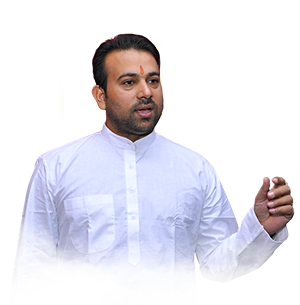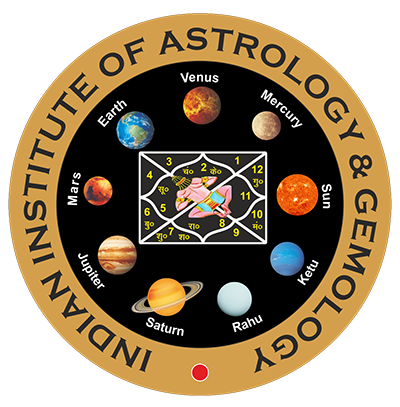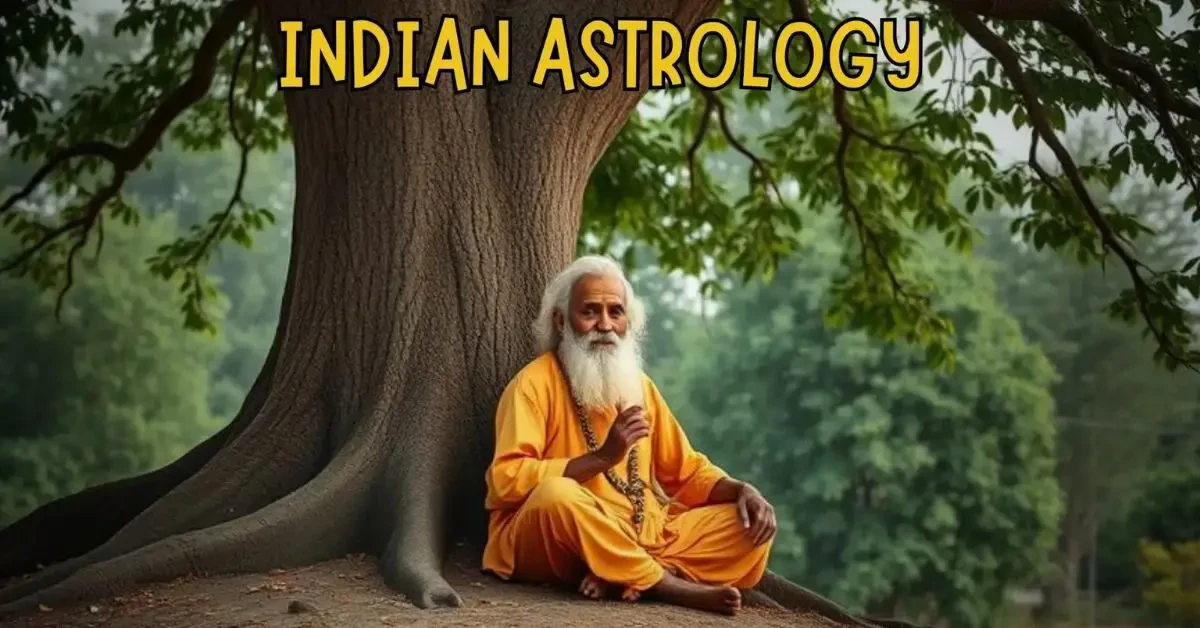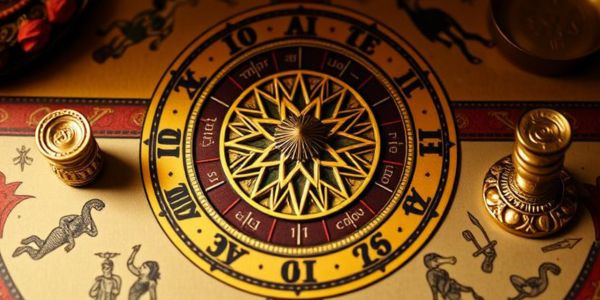




2449 Views | October 30, 2024
Indian astrology represents a traditional divination system that goes by the names Vedic astrology and Jyotish Shastra within Indian culture. The ancient practice began thousands of years ago through the combination of spiritual understanding and astronomical and mathematical principles to provide knowledge about human existence and natural processes and individual destinies. People maintain their dependence on Vedic astrology because it remains applicable to current life difficulties and partnership selections and professional decisions. This blog dive into the essence of Indian astrology, its historical significance, key components, and its role in the modern world.

The origins of Indian astrology trace back to the Vedic period (around 1500–500 BCE). In ancient times Rishis who were the sages of India observed how celestial movements affected the Earth. The Vedas, especially Rigveda and Atharvaveda, contained the documented findings of ancient authors as they established Jyotish Shastra.
Vedic astrology features the Brihat Parashara Hora Shastra which Sage Parashara received authorship. The text uses systematic explanations to outline astrological principles by describing planetary positions and zodiac signs plus making predictions. The Surya Siddhanta stands as a significant work which is acknowledged as both an astronomical and astrological manuscript.
Through astrology India benefited from administrative guidance which also extended its utility to agricultural purposes and religious matters. The royal court consulted astrologers for guidance before warfare and critical executive choices while farmers depended on astrology to determine their planting and harvesting periods.
Indian astrology functions through multiple essential elements that shape its precision as well as knowledge depth. Let’s explore these components:
1. Indian astrological Rashi Chakra contains twelve zodiac signs which have Aries (Mesh) followed by Taurus (Vrishabha) and Gemini (Mithuna) then Cancer (Karka) followed by Leo (Simha) followed by Virgo (Kanya) followed by Libra (Tula) followed by Scorpio (Vrishchika) followed by Sagittarius (Dhanu) followed by Capricorn (Makara) followed by Aquarius (Kumbha) and finally Pisces (Meena). The constellations support these symbols which reveal certain individual traits and characteristics.
2. Indian astrology adopts nine planets (Navagrahas) that include Surya (the Sun) and Chandra (the Moon) together with Mangal (Mars) and Budh (Mercury) as well as Guru (Jupiter) and Shukra (Venus) and Shani (Saturn) and Rahu (North Node) and Ketu (South Node). A different life domain corresponds to each planet as they represent career aspects along with relationships, health and spiritual matters.
3. Each of the 12 astrological houses in the chart corresponds to unique life dimensions. For example:
4. Indian astrology assigns huge importance to the 27 Nakshatras or lunar constellations across its system. Nakshatras are thought to modify the subtle life forces of people which enhances the accuracy of predictions.
5. Dashas (Planetary Periods) form the foundation of Indian astrology by using the Vimshottari Dasha system. Based on the Vimshottari Dasha system, astrologers can predict future events by analyzing the periods where particular planets exercise their dominance over different life stages of a person.
6. Vedic astrologers depend on Panchang (Hindu Almanac) which consists of five components including lunar day Tithi and constellation Nakshatra and planetary combination Yoga and Karana (half-day) and Vara (weekday). The tool is extensively utilized to discover favorable time windows known as Muhurats.
Indian astrology delivers more than future predictions because it shows complete life understanding while supplying practical help for every life area.
1. Kundali Milan which performs matchmaking for marriages represents a widely used practice in Indian astrology. Birth charts serve as a basis to rate how compatible two individuals are through chart comparison. A marriage's success depends heavily on three main elements including Ashtakoot Milan analysis and Mangal Dosha identification and detailed planetary position evaluation.
2. Through Career and Finances Astrology people can discover appropriate career options because the assessment combines their individual strengths with planetary influence predictions. A person with strong Jupiter often finds success in teaching or law and those with dominant Mars tend to excel in engineering and defense-related careers.
3. A select group of planetary arrangements might reveal potential health problems as well as weaknesses. Mental health problems can occur when there are planetary hindrances in the sixth house of health or when Moon receives insufficient planetary support. Astrologers recommend two common solutions consisting of mantras and gemstones to help counteract the negative interactions.
4. The spiritual part of existence receives important attention in the astrological system of Indian culture. Astrological knowledge enables people to comprehend the repetitive behaviors that come from past lives so they can match their present actions with their life destiny. Rahu and Ketu's Solar System positions reveal important information about spiritual education received from previous lives.
5. Through Muhurats and Festivals Astrology determines favorable wedding times together with suitable times for housewarming ceremonies and all major ceremonies. The method connects Hindu holidays to sky patterns in order to create harmony between spiritual forces.
Various remedial measures exist within Indian astrology for mitigating unfavorable planetary effects.
1. Through mantra recitation people can build planetary strengths by chanting the Gayatri Mantra together with the Maha Mrityunjaya Mantra.
2. The wearing of gemstones including ruby for the Sun and emerald for Mercury allows people to boost beneficial planetary energies.
3. The geometric yantra functions as an energized religious tool to assist meditation along with invoking planetary influences.
4. The reduction of planetary afflictions occurs through charitable donations made on specific occasions of food and clothes and monetary gifts.
5. According to Vastu principles people can create a balanced living space through proper spatial orientation.
Modern society keeps Indian astrology at the forefront despite technological progress in science. Here’s why:
1. People seek guidance from astrology because life brings rising anxiety and unpredictable situations. A birth chart reveals customized information about personal strengths alongside weaknesses as well as the predicted path of life.
2. Indian cultural heritage makes extensive use of astrology since it affects wedding planning and pilgrimage scheduling. The cultural traditions of Indian society remain stable because of astrology.
3. The world acknowledges the precise nature of Indian astrology together with its profound understanding. Western culture draws numerous people towards Jyotish Shastra for its potential to help them develop spiritually while becoming more aware of themselves.
4. The study of astrology enables people to gain hope along with developing control in their lives. People gain self-assurance in their decision-making abilities because they understand planetary cosmic energies.

Many individuals respect Indian astrology but skeptics dispute its scientific foundation. Contemporary skeptics challenge astrology because they claim it cannot be verified scientifically and depends on what they consider personal understanding. Supporters of astrology argue it functions through beyond-scientific spiritual energy patterns that follow laws of karma.
As an ancient practice Indian astrology serves as a connection between cosmic forces and human existence. This practice draws from spiritual knowledge to deliver useful instructions about coping with daily life problems. Through Jyotish Shastra you can receive guidance that leads you toward clarity on matters of relationships and career development as well as spiritual improvement. Indian astrology maintains its eternal status as a guiding force which helps humans access infinite cosmic knowledge through the stars and planets.
Would you prefer examples about Rahu and Ketu influence on careers together with beginner-friendly tips for astrology? Let me know!